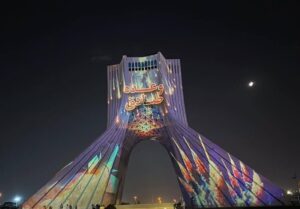Seyyedeh Nosrat Begum Amin (1883–1986), known as Banu Amin, was a prominent Shia scholar, jurisprudent, mystic, and interpreter, famous for her commentary titled “Makhzan al-Irfan.” She published numerous works under the pseudonym “Banu Iranian.”
Banu Amin studied under scholars such as Seyyed Ali Najafabadi and received authorization for narration and ijtihad from Mohammad Reza Najafi Isfahani, Sheikh Abdul Karim Haeri, and others. Ayatollah Marashi Najafi, Allameh Amini, and others also granted her permission for narration.
Seyyedeh Nasrat Amin was actively involved in social and cultural issues. She fought against the forced unveiling law during the Pahlavi regime and established schools.
Numerous academic and spiritual figures have expressed their views on Banu Amin’s scholarly and spiritual status. Mohammad Taghi Jafari stated that considering the elevated spiritual ranks achieved by Iranian women, Banu Amin should be counted among the elite scholars who contribute to the birth of a new life through acquiring knowledge. He also mentioned that based on the scholarly works available, she can be recognized as one of the eminent scholars of Shia Islam.
Seyyed Mohsen Amin quoted Seyyed Shahab al-Din Marashi Najafi describing Banu Amin as the unique figure of her time and the authority of women in her era. Ayatollah Morteza Motahhari recounted his encounter with Banu Amin, emphasizing her profound knowledge.
Figures such as Allameh Amini, Rahim Arbab, Allameh Tabatabai, Seyyed Shahab al-Din Marashi Najafi, Mohammad Taghi Jafari, Morteza Motahhari, Seyyed Hashem Haddad, and Seyyed Mohammad Hossein Tehrani visited her to discuss academic matters related to their fields.
Biography:
Banu Amin was born in Isfahan during the late reign of Naser al-Din Shah in 1274 (1895). Her father, Seyyed Mohammad Ali Hosseini Isfahani, known as Amin al-Tajjar, was a prominent and pious merchant, and her mother, Zahra, was from the respected Janabi family of Isfahan. Nasrat Amin married her cousin, Haj Mirza Agha, known as Moein al-Tajjar, a renowned and devout merchant, at the age of thirteen. They had eight children, seven of whom died during her lifetime due to unknown diseases and contagious illnesses prevalent at that time.
Death:
Banu Amin passed away on Tuesday, 23rd of Khordad, 1362 (June 12, 1983), and was buried in Isfahan.
Education:
Banu Amin began her education at the age of five in a traditional school and started learning Arabic at eleven. At the age of twenty, she earnestly started studying religious sciences, syntax, and morphology, benefiting from eminent scholars who visited her home. She learned the fundamentals from Abu al-Qasim Zafarani and Ali Asghar Sharif, and at the age of thirty-two, she pursued jurisprudence, principles, and wisdom under Seyyed Ali Najafabadi. Most of her studies took place under his guidance.
Ijtihad and Authorization:
Banu Amin, at the age of forty-two in 1354 (1975), after twenty-three years of continuous effort in studying rational and transmitted sciences, received her first ijtihad and narration authorization from Mohammad Kazem Shirazi and Abdulkarim Haeri Yazdi. This was the first official authorization for ijtihad and narration granted to a woman, which has been acknowledged in scholarly and jurisprudential circles. Shortly after, she received another authorization letter from Ibrahim Hosseini Shirazi Isfahbani. In the month of Rabi’ al-Awwal, 1357 (1978), she received narration authorization from Mohammad Reza Najafi Isfahani.
Works:
Banu Amin’s published works include:
1. “Makhzan al-Irfan,” a comprehensive commentary on the Quran in fifteen volumes, written in an argumentative, verbal, and narrative style.
2. “Al-Arba’iniyah al-Hashimiyyah fi Sharh Jumlah min al-Ahadith al-Waridah fi al-Ulum al-Diniyyah” (written in Arabic, translated into Persian by Banu Zaynab Sadat Homayouni).
3. “Makhzan al-Laila fi Fadail Mawla al-Mawali Imam Ali ibn Abi Talib (AS).”
4. “Seer wa Suluk dar Ravesh-e Awliya-e Tariq-e Sa’ada.”
5. “Ma’ad ya Akherin Seer-e Bashar.”
6. “Ravesh-e Khoshbakhti va Tawsiyeh be Khwahan-e Emani.”
7. “Akhlaq va Rah-e Sa’adat” (translation and excerpt from the book “Tahzib al-Akhlaq wa Tathir al-A’raq” by Maskuyeh).
8. “Nafahat al-Rahmaniyya fi al-Waridat al-Qalbiyya” (written in Arabic, translated into Persian by Mehdi Eftekhari as “Nasim-haye Mehrbani”).
9. “Jami’ al-Shatat” (written in Arabic).
Among Banu Amin’s students are Zaynab Sadat Homayouni, Afat al-Zaman Amin, Rababeh Ilahi, and Batul Ghazi.
Mystical Revelations:
In her book “Nafahat al-Rahmaniyya,” Banu Amin recounts revelations she received from the age of thirty. She describes inspirations that entered her heart. Religious figures and her disciples have also spoken about her mystical experiences and miracles.
Social Activities and Cultural Services:
Banu Amin openly opposed the forced unveiling law of the Pahlavi regime by boycotting designated gatherings and leaving Isfahan for a four-month residence in Qom. She actively contributed to social issues by writing articles for magazines and newspapers. Establishing Maktab Fatimah seminary in 1344 (1965) and Amin Girls’ High School before the revolution were among her services.






